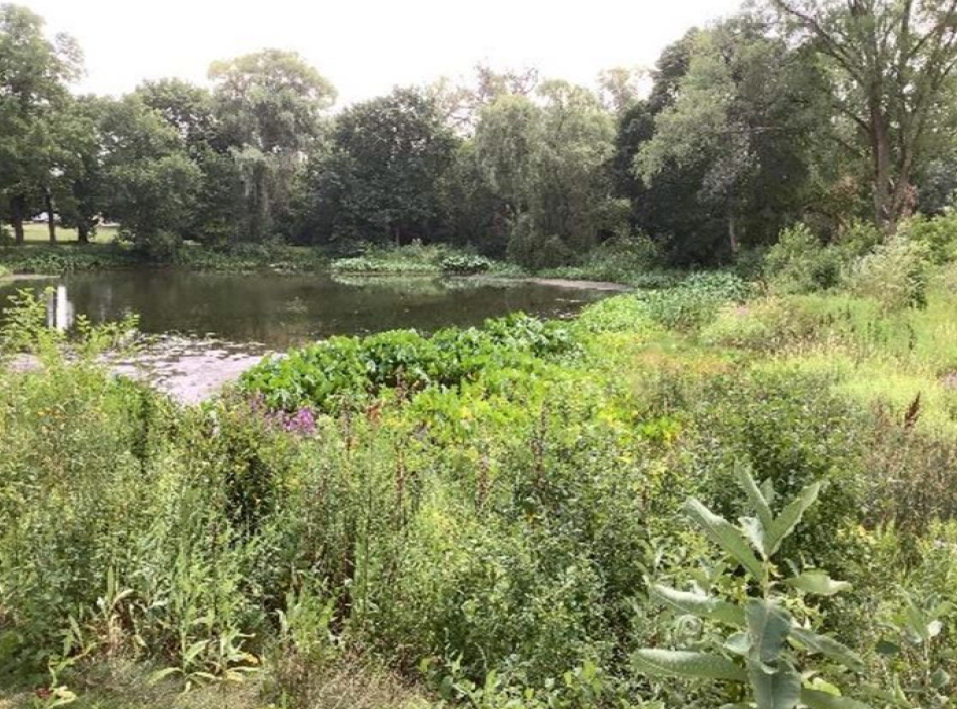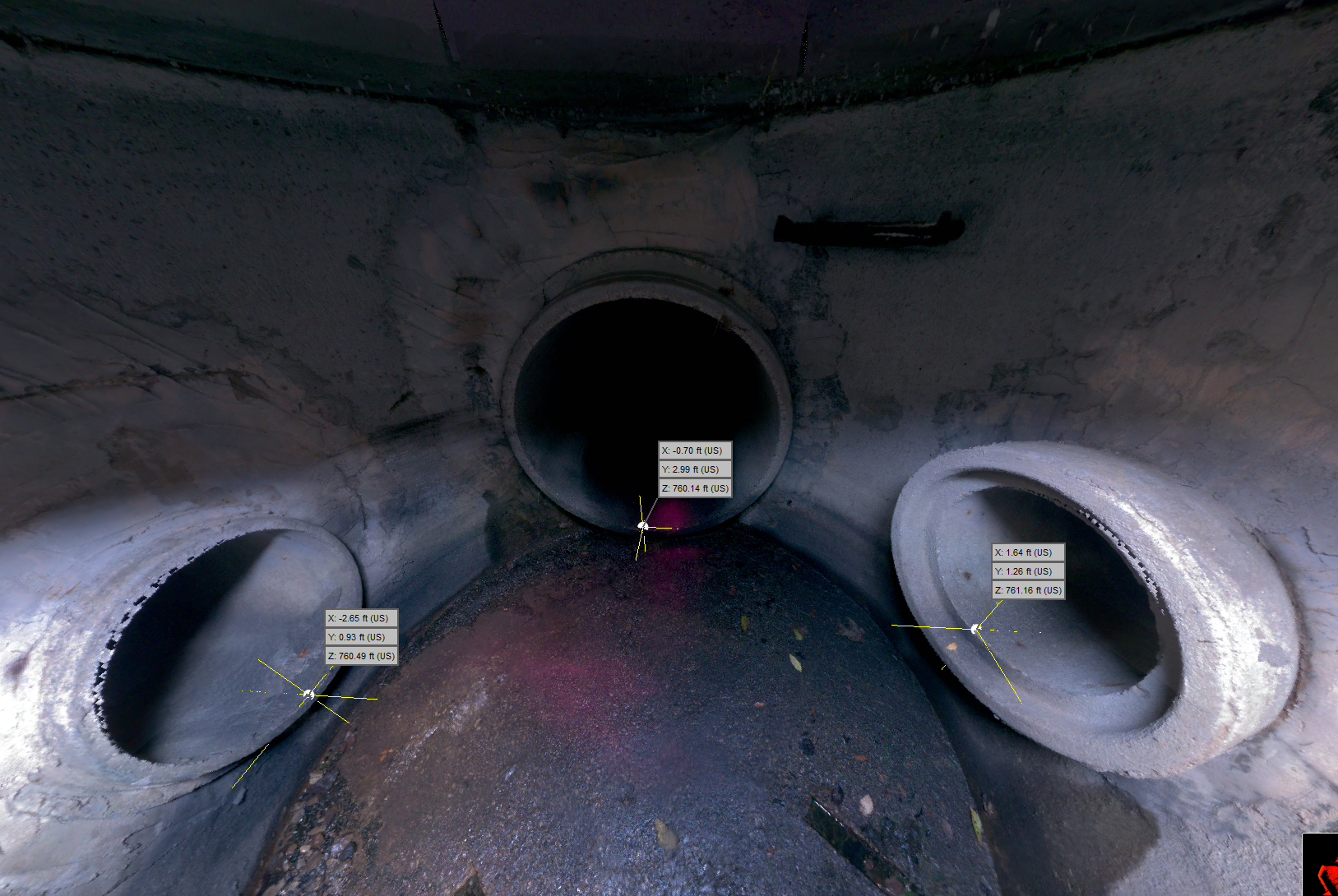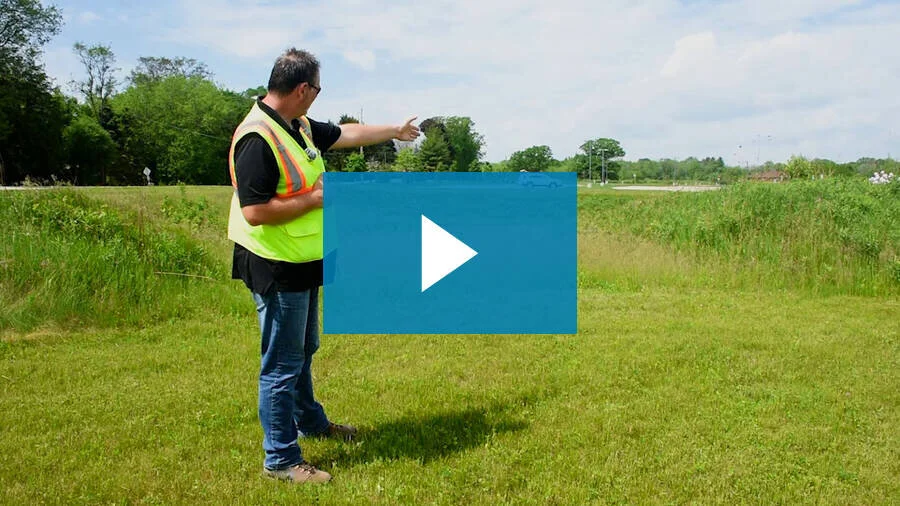The Honey Creek Headwaters and Stream Restoration Project is the revitalization of the City of Greenfield’s most commonly used park – Konkel Park. The project area included a 0.92-mile segment of Honey Creek that had been overgrown with buckthorn, filled with sediment, and had no natural inputs. Originally, the headwaters area was not a defined stream; it was a diverse marsh complex that was channelized to facilitate drainage. Later, sections downstream were lined with concrete, or encapsulated. This created numerous problems for the community including flooding, serving as a habitat for invasive species, such as cattails and reed canary grass, overgrowth of buckthorn, and restricted flow in the main channel.
Out-of-the-Box Solutions
When managing a Stream Restoration project that is as degraded as Honey Creek was, it is necessary to make balanced compromises in order to create a healthy environment. It was extremely difficult to strike a balance between making the project site look like a natural stream and accounting for the fact that it does not at all behave like a natural stream, in turn, requiring various out-of-the-box solutions.
Our compromises were designed to accommodate the extreme difference in flow rates. The stream has no flow at base flow and experiences flood flow when it rains. We were forced to alter the channel dimensions to make the stream deeper and wider than originally intended. This is vastly different than how natural functioning streams are typically restored.
The main goal of the restoration was to increase overall flood capacity. Daylighting two storm sewers that were previously causing sections of surrounding streets to flood and connecting 6 acres of flood plains helped us achieve this.
Before Rehabilitation
After Rehabilitation
Honey Creek Grand Opening — Ribbon Cutting Ceremony
Community Benefits
The most monumental success that has come out of revitalizing the heavily-used park is that it now serves both form and function. Community residents now have the opportunity to enjoy various amenities surrounding the creek. In July, the community celebrated the grand opening of the project area with a ribbon-cutting event, live music, and food trucks.
The park is now accessible to the public and offers:
Boardwalks
Fishing Piers
Outdoor Classrooms
Fishing Pond
Public Shelter
Using natural channel design principles (learn more about Natural Channel Design vs. Urban Channel Design), the streams are now connected, fully functioning, and operating hydraulically like a normal stream.
Other targeted project benefits include:
1,293,000 gallons of additional storm water storage.
1,800 linear feet of stream added through increased sinuosity and stream re-alignment.
6.36 acres of restored floodplain.
1.3 miles of stream bank stabilization.
415 lbs of phosphorus reduction annually.
16,259 lbs of TSS and 45.51 lbs of TP was captured by the storm water pond installed adjacent to the creek.
R/M Can Help!
Interested in exploring how R/M can help restore your local streams? Contact us to learn more!
about the author
nicholas p. connor, m.s.
biologist
Senior Biologist Nick Connor, MS, has a focus on urban river systems and Environmental Risk Assessment. His technical experience is in critical issues and feasibility studies, ecological restoration, stream restoration, and slope stabilization for water quality and habitat improvement to help achieve both development and watershed management goals. He is a key project coordinator for site constraints analysis, wetland delineations, threatened and endangered species assessments, and permitting evaluations for both municipal and private sector clients, including solar developers.




















